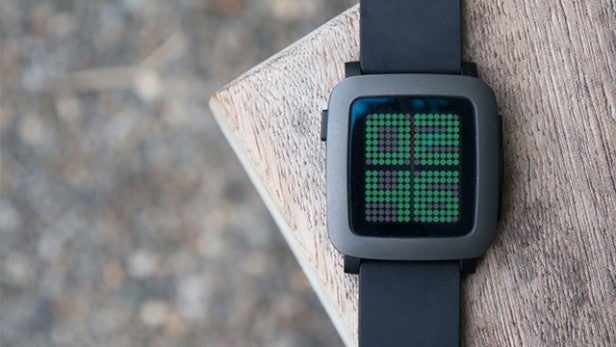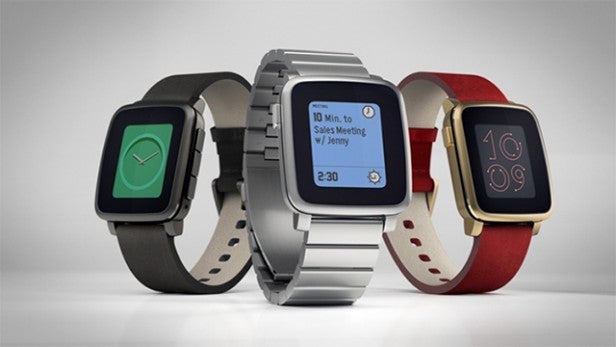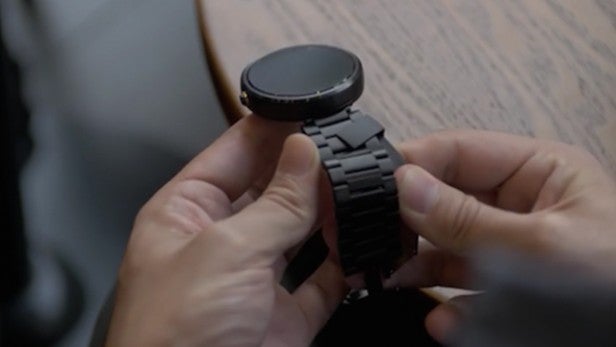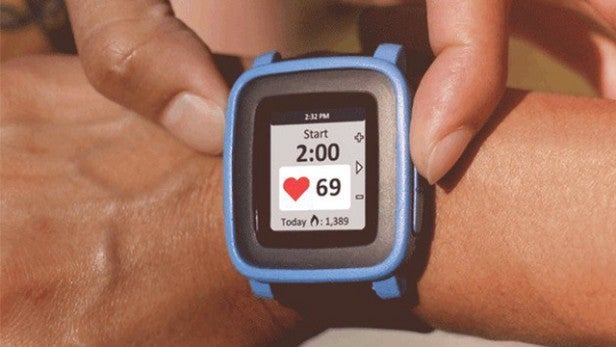6 Pebble Time Smart Straps we want right now

Pebble Time Smart Straps: 6 clever bands we want to try
Wearables used to be such an easy tech category – it was all about fitness wearables, or smart watches that had funny faces, and that was the end of that. That was until smart jewellery came along, swiftly followed by clothes that integrate body sensors and heat technology into their very fibres.
However there’s still something to be said for a smart device that sits on your wrist in prime viewing position, and is almost as simple as an old-fashioned timepiece – and Pebble Time is a device that practically invites creativity and add-ons.
Pebble has set up a software development website, but some have gone even further with creative wristbands to enhance the technology that’s lying dormant in the device. Inspired by these pioneering acts of innovation, here’s a couple of Time bands we’d like to see hit shelves soon.
Wireless charging
Trust Kickstarter to be the home of all the next great things in tech design. This one comes courtesy of TYLT, which is raising funds for the VÜ Pulse and, at the time of writing, had already smashed its target.
Taking a reading of your heart rate every 30 minutes in rest mode and 10 seconds in active mode, it partners up with a smartphone app to chart your heart rate change, calories burned and steps taken throughout the day.
Related: Pebble Time Steel review
Even better than all of that, it charges up your Pebble Time wirelessly, using a Qi wireless charging pad. Anything that removes the need for yet another charging cable is a winner in our books.
Pay with your wrist
That extra accessory port on the Time comes in handy if you want to swipe your wrist to pay for your morning cup of joe. Enter the Pagare smartstrap, which integrates an NFC chip with card network tokenisation that puts the Time in the same contactless payment league as other smartwatches like the Apple Watch.
Plus it’s planned to be on sale in several different designs and colours, making your Time truly personal. Sure it’s only got one feature, but it’s a pretty great one, and one you’ll soon use without a second thought.
Related: Smart thermostats in the UK
Hand of God
Another Kickstarter success story here, as Deus Ex Aria smashed its $100,000 target and, at time of writing, is sitting pretty with just over $166,000 pledged to the project. Roughly translated as “God from air”, the smartstrap allows you to control your Time with a series of gestures in mid-air, thanks to a series of sensors on the underside of the strap that detect your tendons’ movements and translate these to finger gestures and commands.
A huge bonus is that it’s battery-free so doesn’t require any charging of its own, however it will suck up about 15% of your Time’s battery life, but the developers are working to reduce this. Using the connection between your Time and smartphone, you’ll also have to control over other devices, such as GoPro cameras. The design is currently being finalised, but this is definitely one to watch.
Health watch
Being able to monitor your own health is a huge potential feature of wearables and everyone’s getting a slice of the action, from Apple’s Health app to optical heart rate monitoring becoming a huge wearable feature.
Related: Nest vs Hive
However could it be possible that one day, wearables can replace doctors? Pebble’s own CEO, Eric Migicovsky, hinted at the potential of smartstraps in health monitoring, and it’s not hard to tap into the potential range of optical sensors to monitor not only heart rate but blood oxygen saturation and body temperature too.
While this may not be of interest to the average joe, it’s invaluable information if you’re training for a sport event or monitoring a health condition. Constant blood-sugar monitoring, for example, would be a huge leap in convenience for diabetics. It’s only a matter of time before a developer taps into the health-monitoring potential of the Time – watch this space.
Gamer’s delight
A quick read of the Pebble smartstrap development forum suggests gamers have plenty of ideas for what smartstraps should be offering, and it has nothing to do with health monitoring or mapping out your morning run.
Popular Pebble Time game Pixel Miner, for example, would become even more addictive with smartstrap controls and added features. Integrating gesture control features would also make the gaming experience a lot more realistic, making virtual reality on your wrist much more exciting.
Related: Pebble Time vs Apple Watch![]()
Solar cells, GPS tracking and more
Fairly trivial features like gaming buttons aside, what we really want to see from smartstraps is the practical ability to enhance the Time’s features and make its lifespan as a wearable greater and more attractive.
Solar cells to charge the Time and a speaker to enhance its sound are two relatively simple additions that would be both worthwhile and inexpensive.
GPS tracking is another obvious feature that’s missing from the Time, so strapping it on would make the device significantly more attractive to fitness fans. What about cameras on the straps, so the Time can take its own images? Sure you may look a little silly waving your wrist around, but if it means you can take photos with a flick of your finger then why not?
Related: Smart clothing is the future, not fitness bands
Despite Pebble promising a $1m fund to aid smartstrap development last year, only a few options have hit the market and gained momentum.
As more features are added to the base model of the Time, we’ll see a new slew of smartstraps building on Pebble’s existing technology and make a super-wearable to keep wrist-worn wearables in vogue. From health and fitness to just pure fun, there’s a whole range of potential – let’s wait and see what comes up trumps.
What sort of functionality would you like to see on the Smart Strap? Let us know in the comments below

